surgery
Latest

Robots are now better at targeting individual neurons than people are
The brain is a delicate thing, and scientists keep looking for high tech ways to make it easier and safer to to learn more about it. In the area of brain surgery, there have been smart scalpels that know the difference between tumors and healthy tissue, sensor-embedded plastic wrap to help doctors know just where to operate and even VR headsets to help surgeons monitor patients while they're in the OR. Studying the brain leads to even better outcomes, too, and engineers at MIT have just published a paper about using robots to target individual neurons from inside a living brain in order to record their electrical signals.
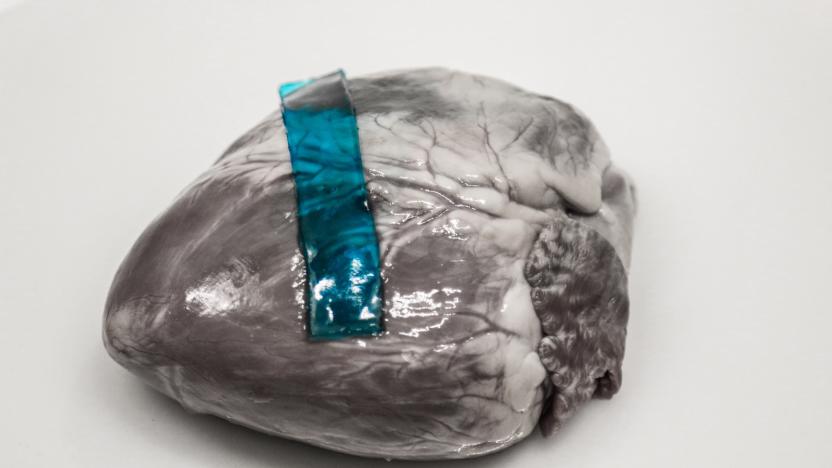
Researchers make biomedical adhesive inspired by slug slime
Being able to repair internal tissue with adhesives would be incredibly useful in the medical world. As of now, those kinds of repairs are limited to sutures and staples, which are far from ideal and while external wounds can be closed with certain glues, they don't work for internal surfaces. First, the insides of our bodies are really wet -- not great for glues. And many of the strongest adhesives we have are either toxic to cells or too stiff to work on squishy, moving organs. But researchers have created a new class of adhesives that get around all of these problems, and they were inspired by slug slime.
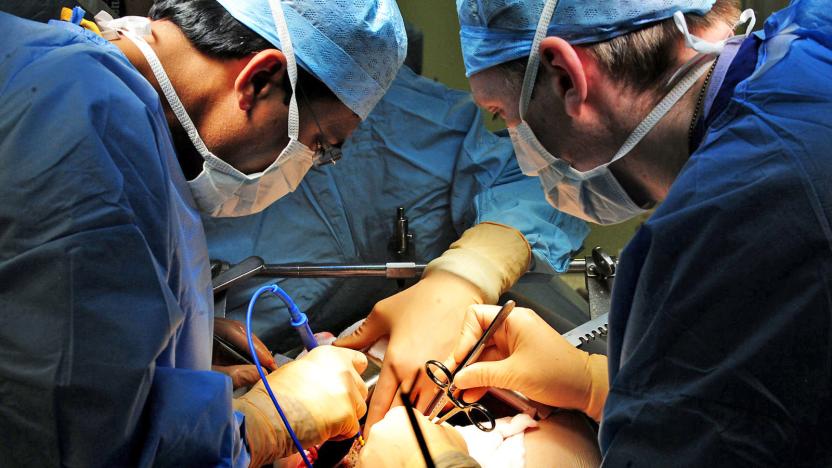
Microscope advances could prevent multiple breast cancer surgeries
A new type of microscope could drastically reduce the number of women having multiple breast cancer surgeries, researchers at the University of Washington claim. Until now, there's been no reliable way to determine whether surgeons have completely removed all cancerous tissue during surgery, meaning between 20 and 40 percent of women have to undergo second, third or even fourth procedures.

Sensor-embedded plastic wrap makes brain surgery safer
It almost goes without saying that brain surgery requires extreme precision, but there hasn't been much advancement in brain mapping techniques for the past two decades. What good is a breakthrough procedure if you're still using bulky, imprecise 1990s-era technology as a guide? Researchers may have a better way: they've developed an electrode grid-based brain mapping tool that's both much easier to wield and far more precise. Instead of relying on the usual metal electrodes, they switched to a conductive polymer that's so tiny and thin it makes Saran Wrap look ungainly. That, in turn, let them stuff 25 times more electrodes into the same space while slimming their tool down to just 0.0002 inches thick instead of a few tenths of an inch.
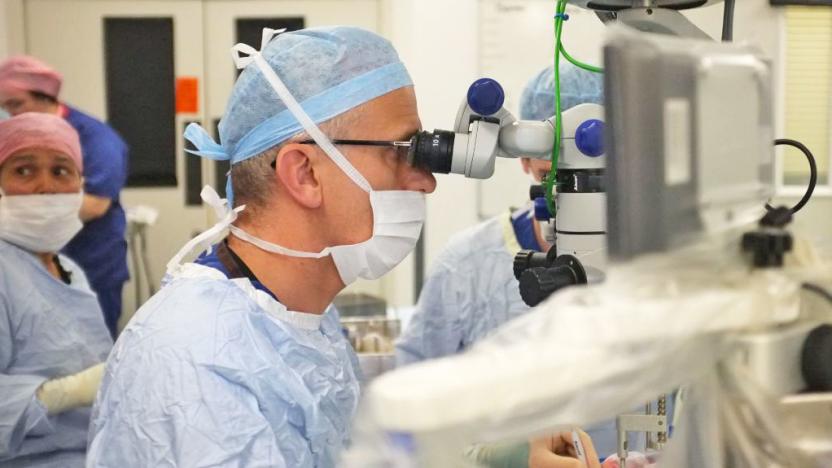
Robot that performs surgery inside your eye passes clinical trial
The next time you go under the knife for retinal surgery, it may not be a human hand holding the blade. That's because a revolutionary surgical system developed University of Oxford in the United Kingdom, which just passed its first set of clinical trials, is able to perform these intricate operations better than even the steadiest surgeon.
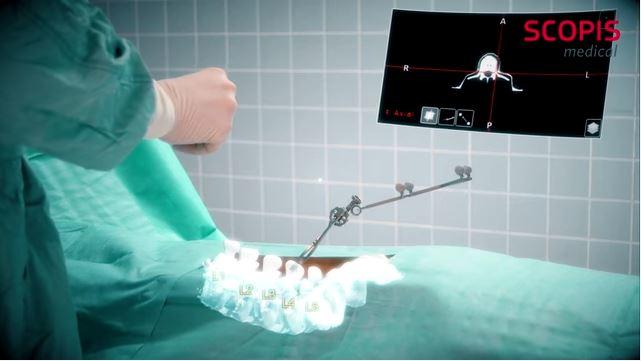
Microsoft HoloLens becomes an AR assistant for spinal surgery
Since the HoloLens was introduced, Microsoft has pitched it as both a gaming peripheral and a practical assistant in the workplace. Professionals have already started using its augmented reality tech to help out, from building engineers donning it to visualize structural blueprints or Duke surgeons testing it during brain operations. Those were preliminary applications, but augmented reality software company Scopis has released a platform for HoloLens specifically to aid in spinal surgeries.

ICYMI: Tornado simulators and cranial cracking robo-surgeons
Today on In Case You Missed It: Researchers at the University of Wisconsin-Madison are leveraging 20,000-core supercomputers to model the inner workings of supercells in hopes of finding out why some storms unleash tornadoes while others do not. In all, the simulation relied on nearly two billion individual data points. We also take a look at a sure-handed robotic surgeon developed at the University of Bern in Switzerland that's designed to drill tiny holes in your skull. See, in order to install a cochlear implant, doctors need to cut a small hole in your skull but the location is packed with facial and taste nerves. One wrong move and the operation can do more harm than good. But with this robo-surgeon on call, doctors can drill more deftly. As always, please share any interesting tech or science videos you find by using the #ICYMI hashtag on Twitter for @mskerryd.
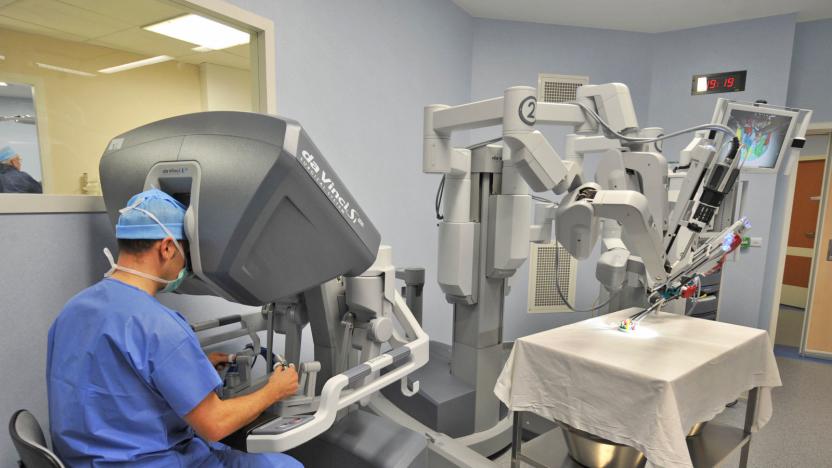
Scientists want to define just how smart robot surgeons are
For roughly three decades, medical robots have assisted surgeons in the operating theater. They provide a steady hand and can make tiny incisions with pinpoint accuracy. But as robotics improve, a new question has emerged: How should autonomous robots be treated? The US Food and Drug Administration (FDA) approves medical devices, while medical societies monitor doctors. A robot that can operate on its own falls somewhere in between. To help, Science Robotics has produced a scale for grading autonomy in robot-assisted surgery. If adopted, it could help regulators decide when and how machines should be treated like humans.

The next robot crawling through your gut could be a gummi bear
The future of robotics is decidedly squishy. We've already seen gel-based 'bots that can catch fish, mimic octopi and even ones that can keep your heart pumping. And, if the researchers from Switzerland's EPFL are successful, they could soon be crawling around in our intestines as well.

Re-live the first surgery recorded via Snapchat Spectacles
UK-based teaching surgeon Dr. Shafi Ahmed -- the man who previously brought you surgery livestreamed in VR -- has repeated a similar feat in a slightly smaller format. After hearing about Snapchat Spectacles, Dr. Ahmed told the BBC that he saw an opportunity to "use cutting-edge technology in relatively low-cost gadgets to teach people everywhere."

ICYMI: Eye surgery, bot style
try{document.getElementById("aol-cms-player-2").style.display="none";}catch(e){}try{document.getElementById("aol-cms-player-1").style.display="none";}catch(e){}Today on In Case You Missed It: The Axsis microsurgery robot is designed to work remotely so that doctors can more minutely control the removal of cataracts. The machine can't cut too deeply into the cornea since it's designed to avoid that most common of human pitfalls. Meanwhile, the big news in the Ukraine is that nuclear accident site Chernobyl just got a massive building to block radiation placed over its exploded reactor, funded by more than 40 countries to the tune of $1.5 Billion. The hijinks of crazyRussianHacker are here and Google's time-lapse photos of Earth; here. As always, please share any interesting tech or science videos you find by using the #ICYMI hashtag on Twitter for @mskerryd.

ICYMI: Photos of wild animals that are far superior to yours
try{document.getElementById("aol-cms-player-1").style.display="none";}catch(e){}Today on In Case You Missed It: The BEASTCAM is a camera rig to scan live animals for fast 3D models to share with educators. Meanwhile Cambridge Consultants is marketing the Ekano mobile surgical suitcase for surgeons to use in developing countries. The very important Whisk Wiper is available online and the rotary dialing smartphone is here. As always, please share any interesting tech or science videos you find by using the #ICYMI hashtag on Twitter for @mskerryd.

The tools you need to perform surgery are in this suitcase
In the US, laparoscopic surgeries are commonplace, since there are plenty of well-appointed hospitals packed to the ceilings with high-tech gear. In the developing world, things aren't so easy, and often surgeons are expected to buy and maintain their own equipment, which can cost up to $150,000. Cambridge Consultants thinks it can help, and has developed a portable laparoscopic surgery kit called Ekano.
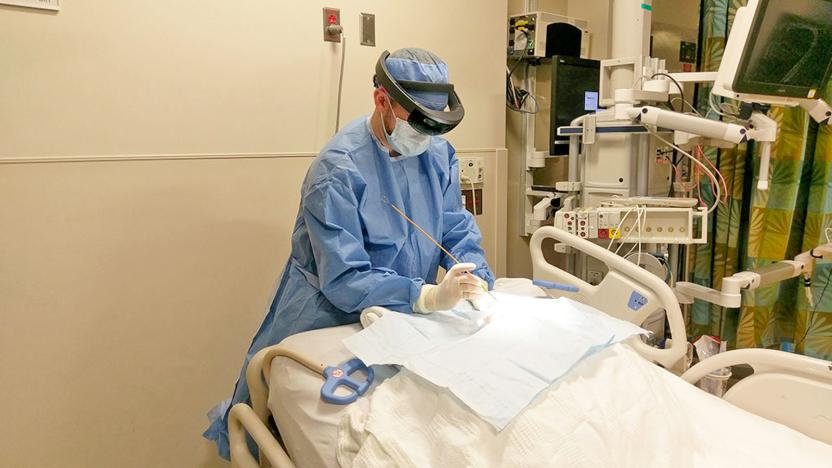
Duke hopes HoloLens will assist with tricky brain surgeries
When Microsoft envisioned the medical world embracing HoloLens in the future, it wasn't kidding around. Duke University is testing the augmented reality headset as an assistive tool for difficult brain surgeries like extraventricular drain placement, which relieves potentially fatal pressure. Instead of relying on CT scans and markers to insert a catheter into the skull during the draining procedure, Duke's doctors would use HoloLens to overlay a reconstructed CT scan on the patient's head. The virtual approach should not only be more accurate than conventional markers (the target is frequently too small or shifts around), but faster and simpler.

Robots can perform surgery inside your eyeballs
Doctors at Oxford University made medical history recently by successfully completing the first robot-assisted intraocular surgery. Robert MacLaren, Professor of Ophthalmology at the university, and his team managed to gently peel off a 1/1000th millimeter membrane from the inside of a patient's eye. To do so, the team relied on a cutting-edge medical device known as the Robotic Retinal Dissection Device, or R2D2.

Woman who received world's first face transplant dies at 49
Isabelle Dinoire, the first person in the world to undergo a face transplant, died at the age of 49 in Amiens, France, of complications following her groundbreaking surgery. In May 2005, Dinoire was mauled by her labrador while she was sleeping and in December of that same year, she received a partial face transplant of the chin, mouth and nose. The procedure left her with the ability to eat, speak and smile normally, and surgeons labeled it a success, though her body never fully accepted the new tissue.
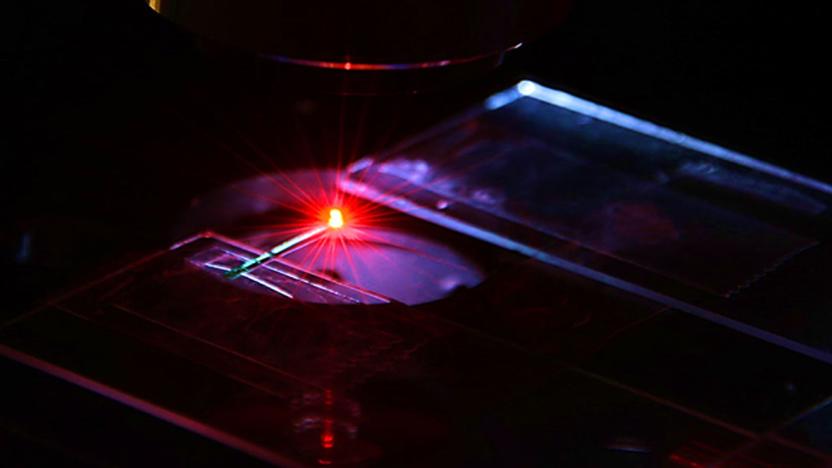
Scientists build a laser using human blood
No, this isn't one of your childhood sci-fi dreams brought to life -- it's real. University of Michigan researchers have developed a medical observation laser where human blood is a key ingredient. When the team shined a laser into a small cavity full of dye-infused blood, they discovered that they could process the laser's light according to their needs. They could amplify the light to exaggerate small changes in cell activity, or filter it to reduce background noise. Existing techniques combine dyes with infrared or visible light in a way that makes it difficult to spot tiny differences.

ICYMI: The dogbot and a heart strap that beats surgery
try{document.getElementById("aol-cms-player-1").style.display="none";}catch(e){}Today on In Case You Missed It: Boston Dynamics introduced a new robot to the lineup and this one is both the smallest yet, and most adorable. The SpotMini is just two feet tall but in the video Boston Dynamics released, shows it can do dishes, throw cans away and creep around for a good 90 minutes on an electric charge. Meanwhile the EPFL designed a new medical device that looks not-entirely unlike an old school slap bracelet, except it's made of silicon and is designed to grip and squeeze the aorta, keeping the heart beating while a patient might be waiting for a heart transplant. Theater fans will want to know about New York's decision to ban robot buyers; while politically-minded folks (not already talking about Great Britain's vote to leave the EU) will want to hear about C-SPAN's decision to broadcast Periscope videos of the Democrat's sit-in. As always, please share any interesting tech or science videos you find by using the #ICYMI hashtag on Twitter for @mskerryd.

Look for Donald Trump's heart in 'Surgeon Simulator'
Surgeon Simulator is putting the life of the presumptive Republican presidential nominee in your (shaky) hands. With the Inside Donald Trump expansion, you're tasked with performing a heart transplant on the priapic real-estate mogul turned politician. Players can choose from swapping in a heart of stone or one made of gold, and should your procedure be successful, which heart you chose will show up on a tracker site along with the choices of every other would-be doctor. What's more, a running total of the cost of the procedures will populate the tracker as well.

ICYMI: RoboDoc beats humans, touchpad skin and more
#fivemin-widget-blogsmith-image-682998{display:none;} .cke_show_borders #fivemin-widget-blogsmith-image-682998, #postcontentcontainer #fivemin-widget-blogsmith-image-682998{width:570px;display:block;} try{document.getElementById("fivemin-widget-blogsmith-image-682998").style.display="none";}catch(e){} Today on In Case You Missed It: The Smart Tissue Autonomous Robot performed surgery on its own (with a human standing by) and turns out, makes such fine, consistent stitches that it actually beats those done by real counterparts. Carnegie Mellon created a wristwatch display and ring system that makes the skin of your forearm a touch pad to interact with the screen. And McDonald's made something called the McTrax placemat in the Netherland's and music folk everywhere want one, asap. We also rounded up the week's big headlines in TL;DR and hope your weekend conversations touch on whether the UAE should build an artificial mountain to get more rain. As always, please share any great tech or science videos you find by using the #ICYMI hashtag on Twitter for @mskerryd.










